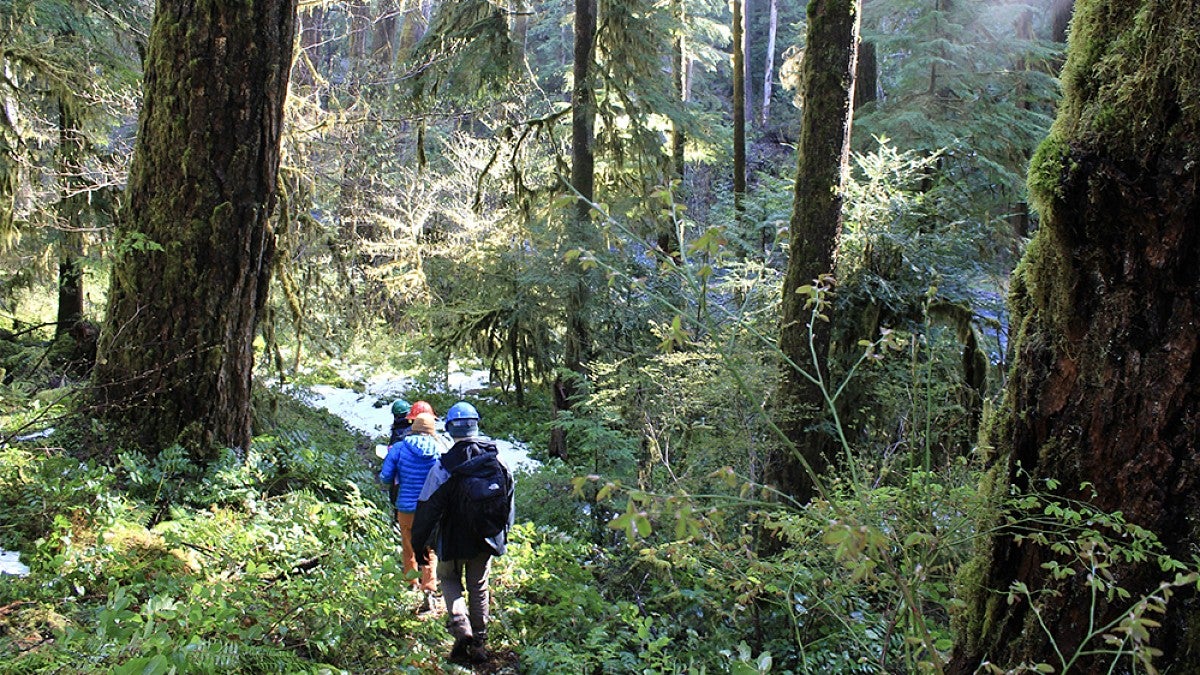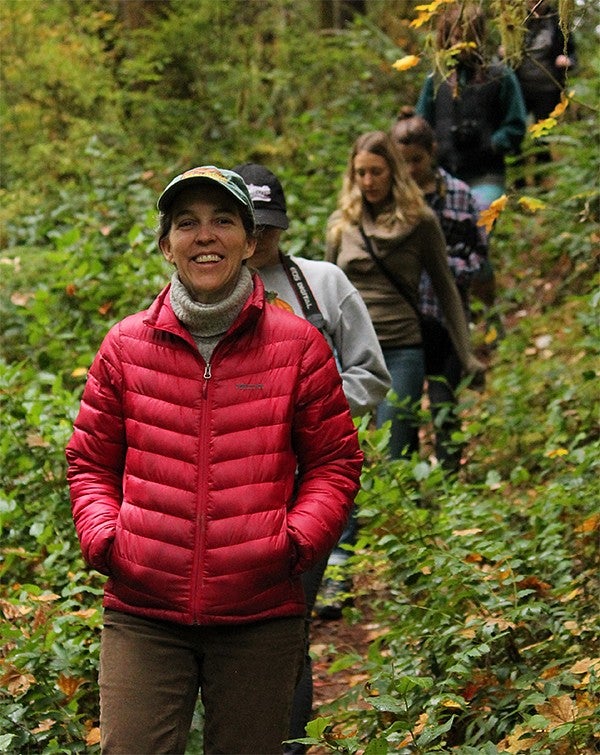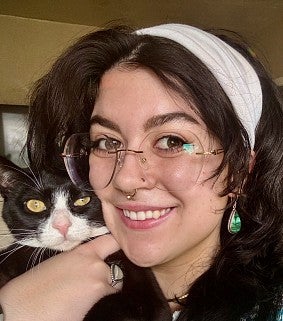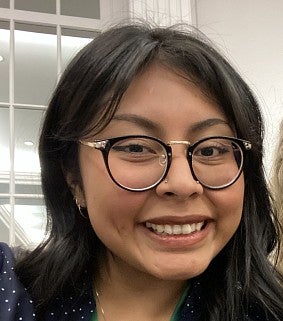
Experiential Learning | Research & Innovation | Community Impact | Career Preparation | Teaching Excellence | 21st Century Liberal Arts | Building Community | Good Vibes | CAS Spotlights | All Stories | Past Issues

Making Sense of Climate Change
BY JENNY BROOKS
APRIL 7, 2025
If there’s one thing that separates today’s students from previous generations, it’s that climate change is no longer a specter looming in some distant future. It’s happening now.
“I think in general, people my age no longer see climate change as ‘the future,’” says Lily Lindros, a fourth-year student majoring in spatial data science and minoring in anthropology. “Things will get worse, but the uncertainty and anxiety about the world we live in, from wildfires to flooding, is here and now. Climate anxiety has become more like climate grief to me.”
Managing emotions around the lack of solutions on climate change is a balancing act for most. Like Lindros, many students in the College of Arts and Sciences experience high levels of anxiety about the future of our planet.
Their concern is understandable. After decades of warnings and proposed plans to slow climate change, it hasn't been enough—and one step forward usually leads to many steps back.
The 2016 Paris Agreement, a multi-country plan to mitigate climate change, is a perfect example. The US, for the second time, withdrew from the agreement this year, even as Earth’s temperature continues to climb and extreme weather events are becoming the norm.
Despite their fear and frustration, however, many students also expressed hope—in large part because they see how they and others are making a difference.
Balancing anxiety and hope
When asked to rate their anxiety level about the future on a scale from one to 10, students interviewed for this article had scores ranging from five to eight.
“I'm probably at a six, and I'm hopeful. There's a storm coming for the environmental field, but I think people, especially in the next four years, will realize the need to help the environment,” says Jake Pargeter, a fourth-year student majoring in environmental studies and a member of the Environmental Leadership Program, a community learning program within the Environmental Studies program. “That makes me hopeful. I also think there is a whole movement that is taking some time, and it's going to surge with more knowledge and better communication.”
Natalie Mathis, a third-year advertising major, sociology minor and member of the Environmental Leadership Program, also scored her anxiety about the future at a six.
"Being around the people that I'm with in my major and seeing all of the movements and activism people are a part of, seeing that so many people care, it makes me feel more hopeful,” Mathis says. “And in my field of study, I see a lot of efforts towards sustainability and making that attractive.”
Their optimism is impressive considering they’ve been handed the least optimistic future of any generation since World War II, when American culture rallied behind a better future. This ability to strike a balance has been ingrained in them, to a degree, after growing up on movies that play out dystopian futures in which everyone bands together to work it all out. Consider WALL-E, The Lorax, Ferngully and Rio.
“As a kid, I was scared and felt helpless. I was like, ‘Oh my God. This is really bad. Why does no one care about the environment?’” says Shannon O’Connell, a third-year student majoring in environmental studies. “But I feel like to lose hope is to give up, and I don't want to do that, even if I feel very hopeless right now. It definitely motivates me to get my homework done!”
What is the Environmental Leadership Program?
The Environmental Leadership Program is a nationally recognized community learning program in which students collaborate with community partners on service-learning projects. Participating students contribute approximately 120 hours of service, during which they develop skills in leadership and collaboration, public presentation, website development, report preparation and networking.
Find student groups with environmental and climate missions.

Finding hope in action
Taking action seems to be the key to striking a balance between certain doom and hope for the future.
“Climate change 25 years ago was a little ‘fringe’ in the public discourse. These days students accept the reality of climate change,” says Richard York, professor and director of the Environmental Studies Program. “Students aren’t questioning it or doubting it; they’re asking, ‘What do we do about it?’”
Like other issues-oriented areas of study, the curriculum for environmental studies is designed to start with awareness and end with action. This awareness-to-action format ensures students learn what the problem is, start building skills to solve the problem, use their critical thinking skills to make an effective plan for change, and ultimately take action.
“Taking action can be as simple as taking knowledge from the classroom and into your personal life,” says Ada Contreras, a third-year student majoring in environmental studies and a member of the Environmental Leadership Program.
—Ada Contreras, environmental studies major
Action helps students make an impact, with a side benefit of creating room for hope. Beyond the classroom, internships, volunteer work and other experiential learning opportunities can help students alleviate their anxiety by contributing to climate solutions.
Contreras sought an internship with the City of Eugene’s Waste Prevention Program, which gives her opportunities to work with businesses and communities on sustainability and waste prevention. Pargeter, who volunteers with the Oregon Department of Fish and Wildlife, recently spent time cleaning out old wood duck nests and placing new nests at Fern Ridge Lake.
Isa Eisenberg, also a part of the Environmental Leadership Program, supports action that changes policy to benefit the environment. She’s been part of a group campaigning for UO to change its heating system to be more efficient and environmentally friendly.
“Currently, UO is the largest single source of emissions in Eugene, and the university has an incredibly disproportionate effect on the environment,” says Eisenberg, a third-year student majoring in psychology and minoring in both environmental studies and science communication. “Because of previous years of student pressure, they've developed a couple of different climate action plans and are deciding what to do to reduce the emissions.”
Fourth-year chemistry major Caitlyn Cannan says researching clean energy solutions has made her feel empowered to make a difference and take action in alignment with her values.
"What I've learned is that we are doing better than I thought we were. Solar and wind energy are contributing more to the electric grid, coal is on the decline and natural gas is leveling out," she says. "I’m optimistic because I'm seeing a lot of the technology changes that are coming, and I know there are so many people working on it. We are trying as best we can."
The burden of climate change may fall on today’s students and succeeding generations, but Kathryn Lynch, co-director of the Environmental Leadership Program, believes they are capable.
“The Environmental Leadership Program draws students who are passionate about addressing the climate crisis. They are wildly creative and want to use what they’ve learned here at UO to make the world a better place," Lynch says. "The program gives them an opportunity to gain valuable career skills while giving back to the community.”
It’s a lot to ask of them. But if any generation can strike a balance between anxiety, hope and discovery, it’s one inspired by Dr. Seuss. As the Once-ler says in The Lorax, "Unless someone like you cares a whole awful lot, nothing is going to get better. It's not."
What Students Want You to Know about Climate Change

—Shannon O’Connell, environmental studies

—Ada Contreras, environmental studies
